阪急宝塚線池田駅前のネパール料理店「ネパールのごちそう jujudhau ズーズーダゥ」さんへは週末にスペシャルダルバートを頂きに伺う以外にも、平日にもよく訪れます。週末にダルバート、平日はネパール料理の単品というのが我が家のお決まりになりつつあります。車の運転が無い時は、ククリラムやロキシー等を頂きます。 寒い日には、店主カドカさん一押しのジョインカッテ Jhwai Khatteも頂きます。
寒い日には、店主カドカさん一押しのジョインカッテ Jhwai Khatteも頂きます。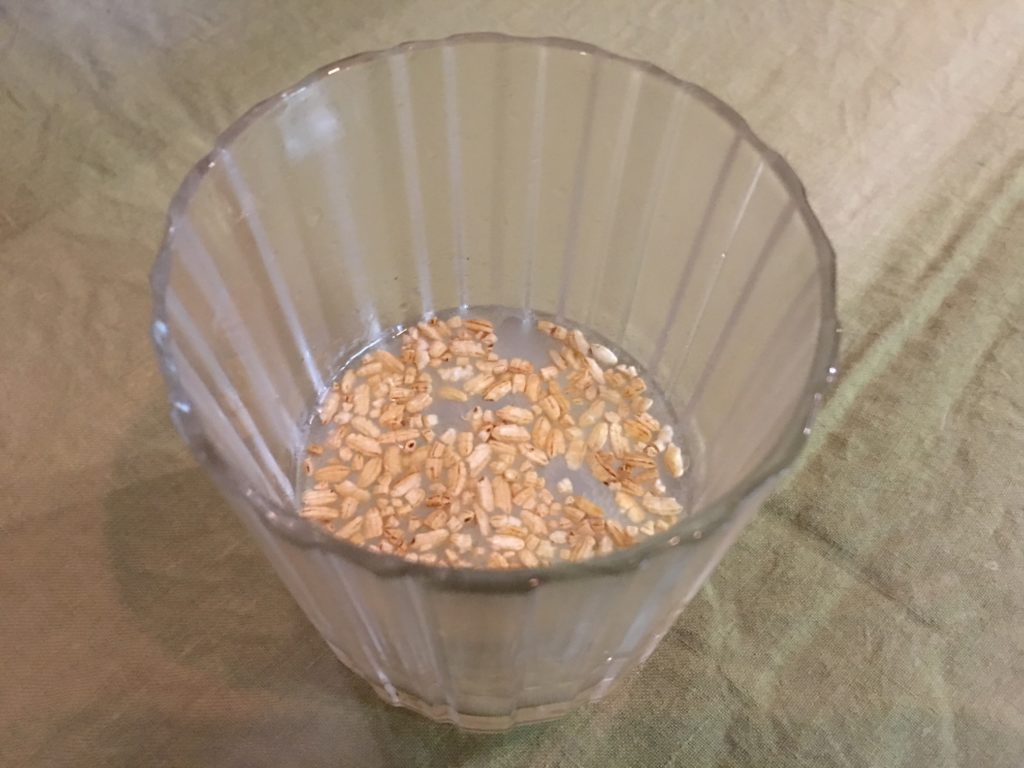 熱したギーgheeにお米を入れてポン菓子の様に膨らませ、ロキシー等に注いで作るのだそうです。Friday The Smarter Entertainment Weeklyの2011年6月19日付けの記事「Think Local, Drink Local」で、Jhwai Khatteの説明として
熱したギーgheeにお米を入れてポン菓子の様に膨らませ、ロキシー等に注いで作るのだそうです。Friday The Smarter Entertainment Weeklyの2011年6月19日付けの記事「Think Local, Drink Local」で、Jhwai Khatteの説明として
Taste:
As ghee and rice are added to the drink, jhwaikhatte tastes less like your conventional alcohol. Because of its incredibly strong taste, this drink is not for those who don’t have a keen taste for drinks.
Something Interesting:
The enormous heating-up drink got its name from the sound (jhwai) that’s made when the cold alcohol is tempered with hot ghee and rice. The combination of rice and ghee is called khatte.
との記述が有り、お米とギーの組み合わせがKhatteで、Jhwaiは熱したギーとお米をアルコールに注ぐ時の音と説明されています。the kathmandu postの2015年11月12日付けの「Winter Wonderland」と題する記事では、説明とレシピが記載されています。
A special thakali winter drink, Jhwai Khatte is prepared from local liquor that is made from millet called rakshi. It has a strong distinctive taste, served with khatte, a combination of rice and ghee.
Ingredients:
– 250 ml of rakshi
– 25 gms of rice
– 1/2 tsp of ghee
– 2 tbsp of honeyDirections: Heat a cooking pot and add ghee and rice. Once the rice turns brown, add the cold rakshi liquor to it—this sizzling sound is the reason behind the drink’s nomenclature – jhwai. Add honey, stir, and serve in a transparent cup. Cheers!
Dipty Sherchan along with her two sisters run Delish Thakali Kitchen. They suggest, “Immediately after pouring the rakshi, close the pot with a lid. That way, the taste will remain strong.”
We All Nepaliの「Traditional foods in Nepal」の記事の中に
Khatte (खट्टे)
It is the popular breakfast in hilly areas of Nepal. It is made from rice mainly from brown rice obtained from dhiki (a special Nepalese manual flaking instrument) but white or polished rice can also be used. It is prepared from rice by soaking overnight, draining and roasting.
との記述も有り、お米自体を指す意味もありそうです。
更にカドカさんにお尋ねすると、 Khatte用のお米は、通常の食用のお米とは種類が異なり、収穫時期もずれて早く、そのため畑での植え付けに工夫がある点などを教えて下さりました。粒が厚いので、潰して上記Khatteあるいはチウラにした時にとても美味しいのだそうですが、今ではネパールでもなかなか手に入らないそうです。
Jhwai Khatteにはネパール料理の数々が良くあいます。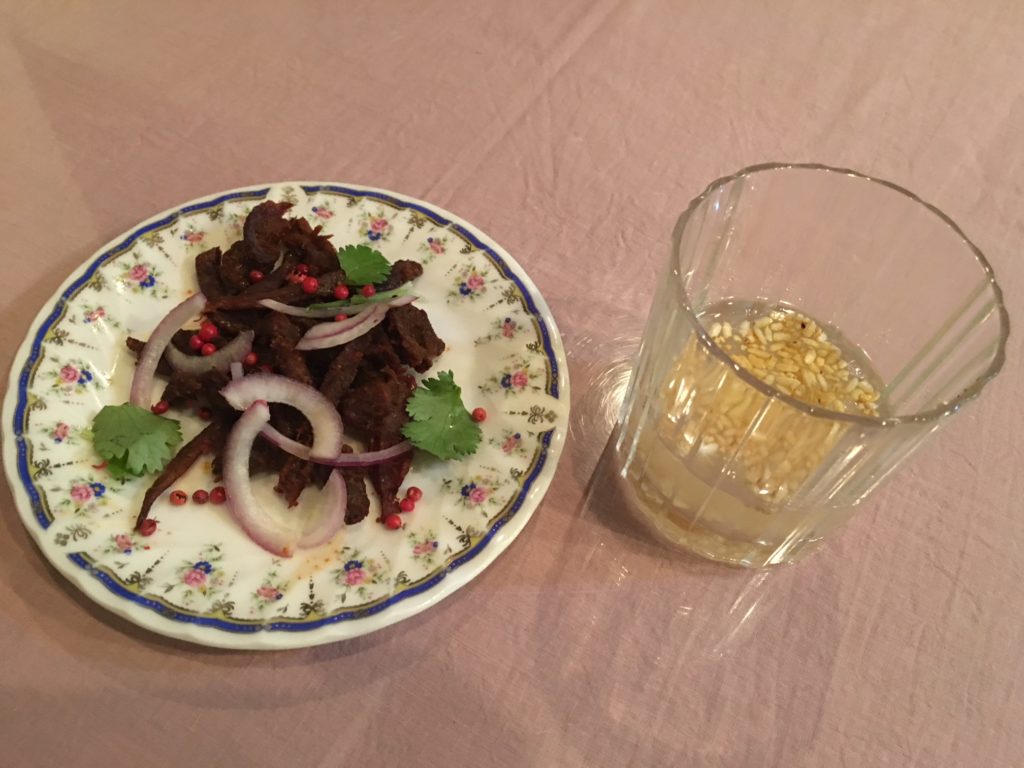 今回サマエバジセットを用意された際には、水牛のスクティSkuti(干し肉)も準備されていました。初日と2日目で調理方法を変えられ、異なった味を楽しむことが出来ました。
今回サマエバジセットを用意された際には、水牛のスクティSkuti(干し肉)も準備されていました。初日と2日目で調理方法を変えられ、異なった味を楽しむことが出来ました。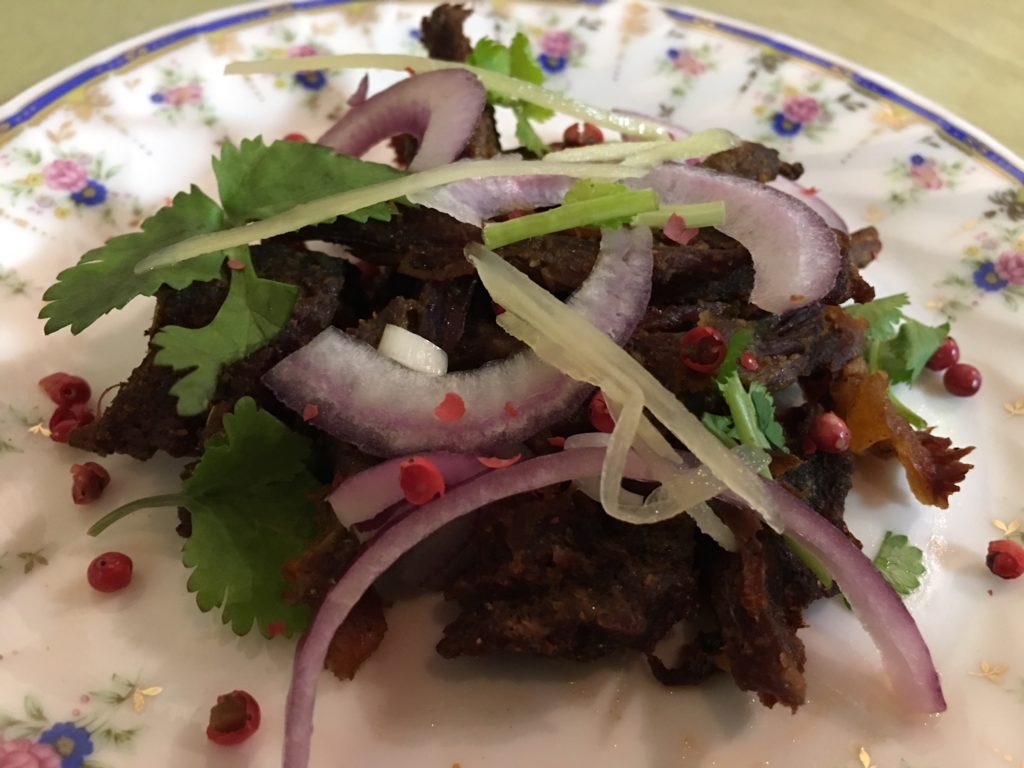 この時は通常メニューには無いマトンのチョイラchoilaもありました。
この時は通常メニューには無いマトンのチョイラchoilaもありました。 日を遡ると、サマエバジの登場が待ち切れず、バトマス・サデコ(大豆)や
日を遡ると、サマエバジの登場が待ち切れず、バトマス・サデコ(大豆)や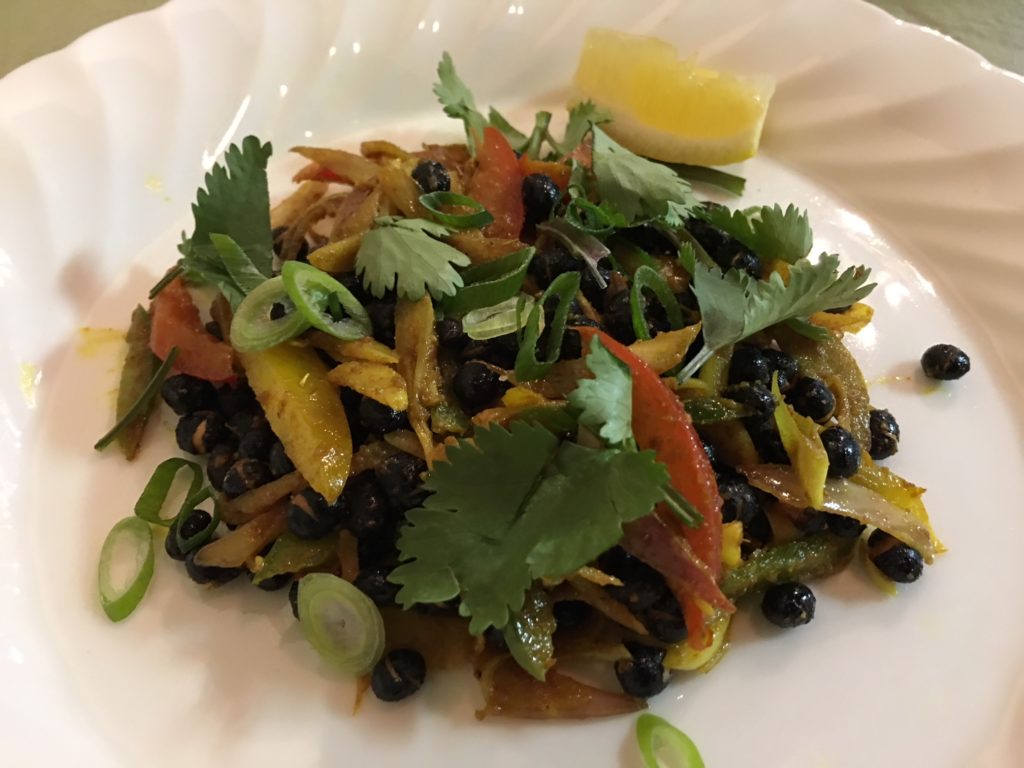 ブトゥワBhutuwa内臓のスパイシー炒め(ハリヨラスン、大蒜の茎入り)もお願いし Jhwai Khatteと共に頂きました。
ブトゥワBhutuwa内臓のスパイシー炒め(ハリヨラスン、大蒜の茎入り)もお願いし Jhwai Khatteと共に頂きました。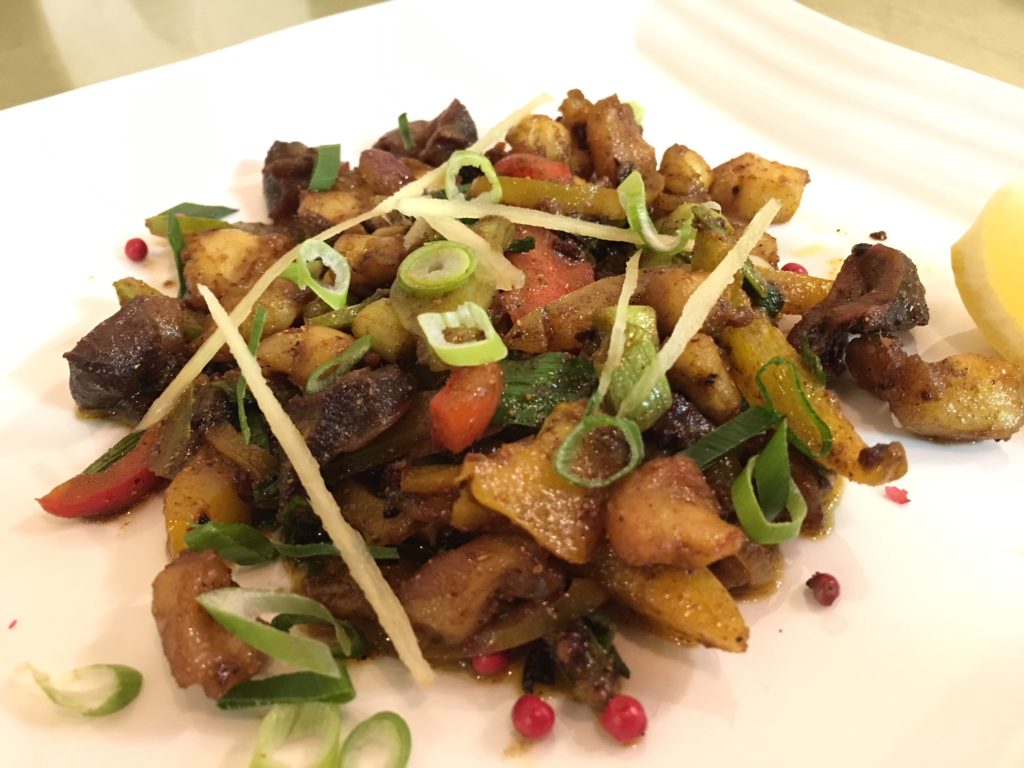
お店で頂ける料理の数々は
→「jujudhau ズーズーダゥ(池田市)ネパールのごちそう」
ネパールのごちそう
jujudhau
ズーズーダゥ
池田市室町1-3
https://ja-jp.facebook.com/jujudhaunepal/
